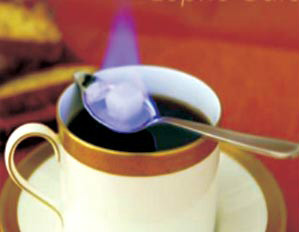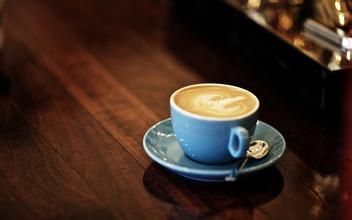Japanese hand coffee step diagram-flannel and v60 coffee maker usage
Japanese hand coffee step diagram-flannel and v60 coffee maker usage
1, water temperature.
The water temperature of hand-brewed coffee is generally kept between 88mur93 degrees. If the water temperature is too high, it is easy to overextract the bitter ingredients of coffee, resulting in bitter taste, loss of acidity, lack of freshness and brightness, while low water temperature can easily lead to insufficient extraction, making coffee sour and insipid.
2, the ratio of water to coffee powder
This applies to all aqueous solutions, that is, the greater the ratio, the greater the concentration of the solution. So the same amount of coffee powder here, the greater the amount of water, the smaller the coffee concentration, the lighter and softer the coffee concentration, the smaller the amount of water, the greater the coffee concentration, the stronger the flavor.
Second, the degree of grinding.
The grinding degree of coffee powder determines the contact area between coffee powder and water during brewing and the degree of easy extraction. The finer the coffee powder is ground, the easier it is to extract its ingredients and the stronger the flavor, but after grinding, it is easy to extract too many bitter ingredients and lose their original acidity. On the contrary, the rougher the grinding degree, the lighter and softer the coffee taste, and the appropriate roughness can well show the acidity of the coffee.
Third, extraction time.
Japanese hand-brewed coffee extraction also has strict requirements on timing. Generally speaking, the extraction time of one cup is about 1 minute 30 seconds, two cups are about 2 minutes to 2 minutes 30 seconds, and 3 cups are about 3 minutes, not more than 3 minutes 30 seconds. Without this time limit, if the extraction time is too short, it is easy to cause insufficient extraction, the taste is insipid, and if it is too long, it is easy to extract too much, and the coffee tastes more bitter and miscellaneous ingredients.
Fourth, extraction apparatus.
The biggest influence here mainly lies in the difference of the filter. There are three kinds of filters commonly used in coffee Ming family: single-hole Merita, three-hole Karita and conical kono.
Relatively speaking, the coffee brewed with Karita is light and soft, has obvious acidity, and tastes pure and refreshing. Melita makes the coffee more fragrant and more stable. The kono style shows a more delicate and softer aroma, a richer flavor, a more obvious sweetness and a more smooth and balanced taste.
Fifth, brewing water.
Making coffee by hand is a "kung fu activity", and this "kung fu" is mainly manifested in the regulation of water flow. In the process of hand bubble, we must keep the height, thickness and speed of water flow uniform and stable. The deficiency of any aspect will affect the richness of taste and the balance of taste.

Important Notice :
前街咖啡 FrontStreet Coffee has moved to new addredd:
FrontStreet Coffee Address: 315,Donghua East Road,GuangZhou
Tel:020 38364473
- Prev

Basic knowledge of coffee utensils-which country is the brand of acaia electronic scale
Basic knowledge of coffee utensils-acaia electronic scale is the brand of which country can set the gouache ratio, grinding scale, extraction time, temperature, coffee bean weight and the amount of water that needs to be flushed by hand; the cooking time can be set according to the habit of individual hand brewing; the countdown to water injection and sound prompt can be realized, and the water intensity curve can be drawn; it can store data, write experience and shoot.
- Next

Does v60 filter paper need to be folded-Coffee filter paper folding method
Does v60 filter paper need to be folded? coffee filter paper folding method log color filter paper, compared with white filter paper, less bleaching process, but the flavor of the filter paper itself is aggravated, you need to pay attention to fully soak the filter paper with boiling water when brewing coffee, some at least 2 or 3 times in order to reduce the taste of the paper into the coffee. Bleached filter paper, imported bleached filter paper, in material selection,
Related
- What documents do you need to go through to open a coffee shop? coffee shop coffee shop certificate processing process
- How to purchase Coffee beans in small Cafe how to choose a suitable supplier for domestic Coffee supply Company
- How to drink Starbucks Fragrance White Coffee? how to make Australian White Coffee? what Italian coffee beans are recommended?
- The Story of Flora Coffee: the name of Flora Coffee Bean and the implication of the Flowers on Florna Coffee
- How much does a cup of coffee cost? How much is the profit of a cup of coffee? What is the profit of the coffee shop in a year?
- Yunnan small Coffee, known as "fragrant Coffee", introduces the characteristics of Alpine Arabica Coffee producing areas in Yunnan, China
- 2023 latest Starbucks full menu price list how much is a cup of Starbucks coffee what is better to drink the most popular hot and cold drinks recommended
- Starbucks different kinds of Coffee Price list Starbucks menu 2023 Top Ten Best drinks in Starbucks
- Starbucks Spring praise Comprehensive matching Coffee Bean theme Story Packaging implication and taste description
- The cost of a cup of coffee latte American coffee cost price and selling price

